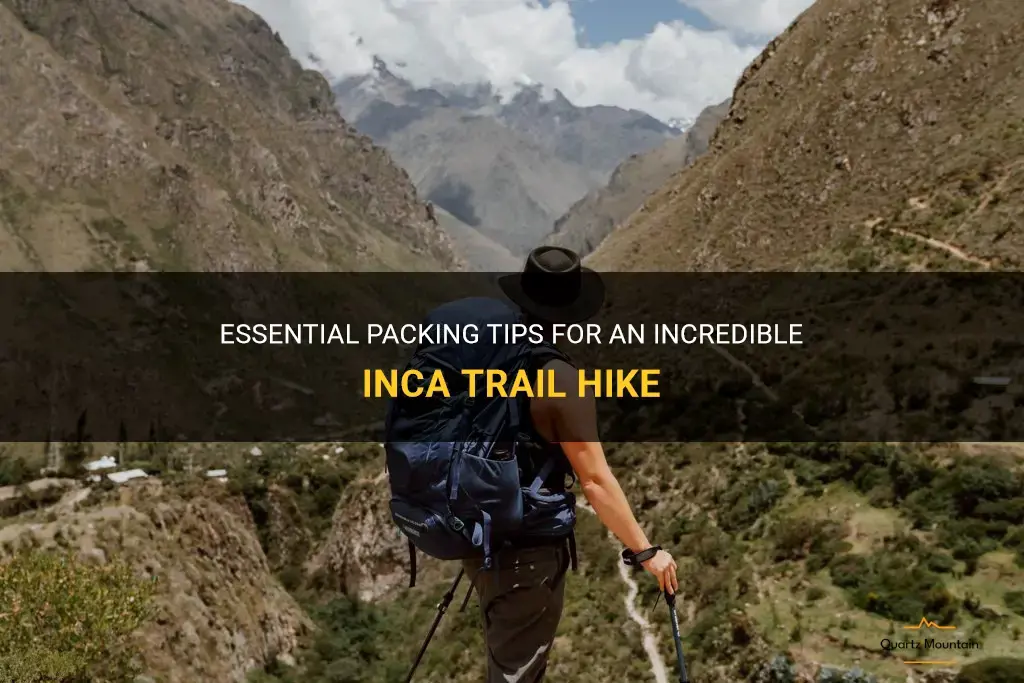
Are you planning to hike the iconic Inca Trail? This ancient route offers breathtaking views and a chance to immerse yourself in the rich history and culture of the Incas. But before you embark on this unforgettable journey, it's crucial to pack wisely. In this article, we will provide you with essential packing tips to ensure a safe and enjoyable Inca Trail hike. From the right clothing and footwear to essential gear and supplies, we've got you covered. So grab your backpack and let's get packing for an incredible adventure on the Inca Trail.
What You'll Learn
- What are the essential items to pack for the Inca Trail hike?
- Are there any specific clothing or gear recommendations for the Inca Trail hike?
- How much water should I pack for the Inca Trail hike?
- Are there any specific food items or snacks that are recommended for the Inca Trail hike?
- What are the guidelines for packing medication or first aid supplies for the Inca Trail hike?

What are the essential items to pack for the Inca Trail hike?
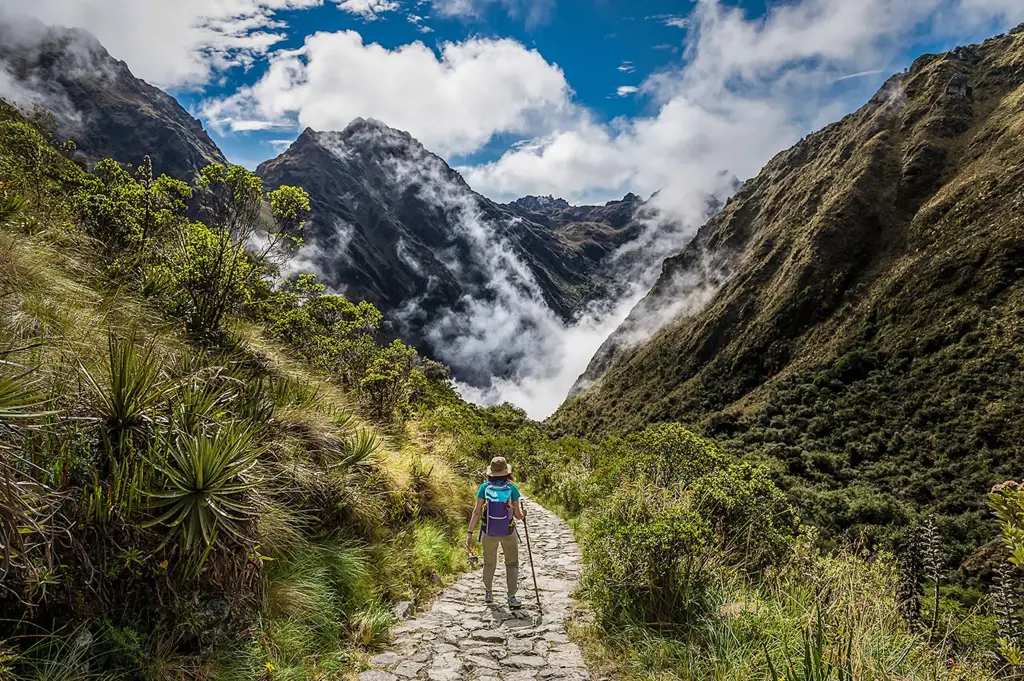
The Inca Trail is a popular hiking trail in Peru that leads to the ancient ruins of Machu Picchu. This trek attracts thousands of visitors each year, who brave the challenging terrain and high altitude in order to experience the breathtaking beauty of the Andes Mountains and the rich history of the Incas. For any adventurer planning to embark on this journey, it is crucial to pack the right gear and essentials to ensure a safe and enjoyable experience. Here are some of the essential items to pack for the Inca Trail hike:
- High-quality hiking boots: The Inca Trail involves long hours of walking on uneven terrain, steep inclines, and rocky paths. Investing in a pair of sturdy, waterproof hiking boots is essential to protect your feet from blisters, sprains, and discomfort.
- Backpack: Choose a backpack with a capacity of at least 40 liters to accommodate all your essentials, including clothes, toiletries, food, and water. Look for a backpack that is comfortable, durable, and has a hip belt for proper weight distribution.
- Lightweight and fast-drying clothing: Opt for moisture-wicking, breathable, and lightweight clothing that can be layered for changing weather conditions. Pack quick-drying t-shirts, long-sleeved shirts, pants, shorts, a fleece jacket, a waterproof jacket, and thermal underwear for cold nights.
- Proper rain gear: Rain can be unpredictable in the mountains, so it is essential to have a good-quality rain jacket and rain pants to keep you dry during wet weather. Also, pack a waterproof cover for your backpack to protect your belongings.
- Sleeping bag and inflatable sleeping mat: The Inca Trail involves camping for several nights, so a good-quality sleeping bag is a must to keep you warm in cold temperatures. Additionally, bring an inflatable sleeping mat for extra comfort and insulation from the ground.
- Toiletries: Pack a small toiletry bag containing essentials such as a toothbrush, toothpaste, biodegradable soap, hand sanitizer, toilet paper, and a lightweight towel. Remember to also bring sunscreen, lip balm, and insect repellent to protect yourself from the sun and bugs.
- First aid kit: It is crucial to have a basic first aid kit that includes band-aids, antiseptic cream, painkillers, blister treatment, and any necessary personal medications. Also, consider packing altitude sickness medication, as the Inca Trail reaches altitudes of over 4,000 meters.
- Water purification tablets: There are limited options for clean drinking water along the Inca Trail. Therefore, it is essential to bring water purification tablets or a water filter to ensure that you have safe drinking water throughout the trek.
- Snacks and meals: While food is provided on the Inca Trail, it is recommended to bring some snacks and energy bars to keep you fueled during the hike. Pack lightweight, non-perishable food items that are easy to carry and provide a good source of energy.
- Trekking poles: The Inca Trail involves steep ascents and descents, which can put strain on your joints. A pair of trekking poles can provide stability and reduce the impact on your knees, making the trek more comfortable.
Packing the right gear and essentials will not only ensure your safety and comfort during the Inca Trail hike but also enhance your overall experience. Be sure to do thorough research, consult with experienced hikers, and consider the weather conditions to determine the exact items you need to pack for this challenging and rewarding adventure.
The Ultimate Guide on What to Pack for Glamping
You may want to see also

Are there any specific clothing or gear recommendations for the Inca Trail hike?
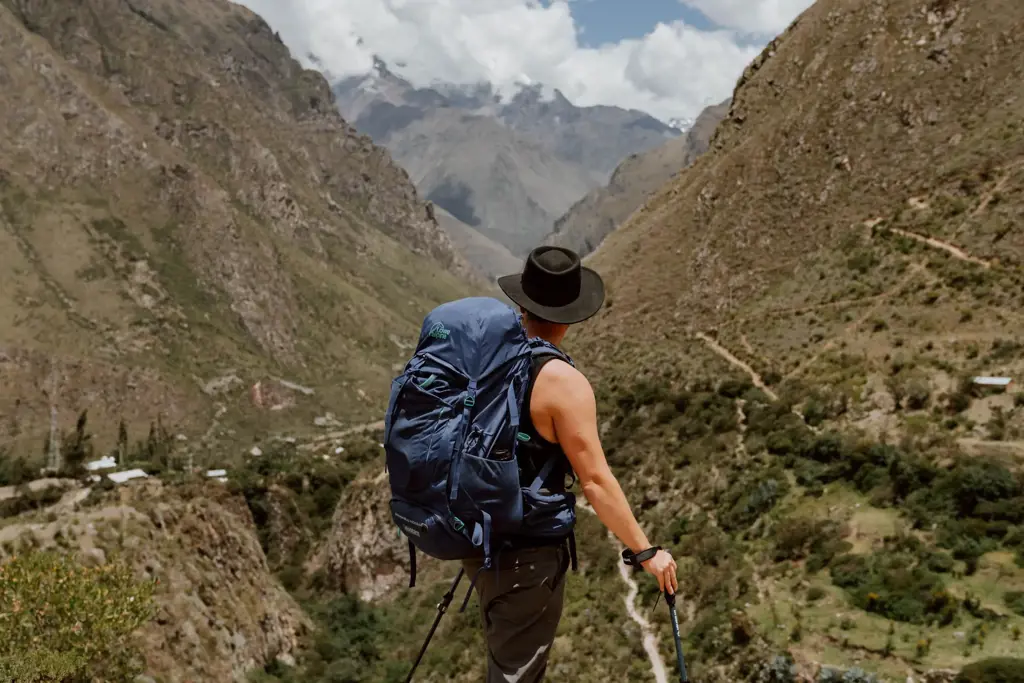
The Inca Trail is one of the most famous hiking routes in the world, attracting thousands of adventurers each year. This 26-mile trek takes hikers through stunning landscapes, ancient ruins, and breathtaking mountain views. While the Inca Trail offers an incredible experience, it's essential to be prepared with the right clothing and gear to ensure a safe and enjoyable journey.
Here are some specific clothing and gear recommendations for the Inca Trail hike:
- Hiking Boots: Investing in a good pair of hiking boots is crucial for the Inca Trail. The terrain can be uneven and challenging, so you'll need sturdy, waterproof boots with ankle support. Make sure to break them in before the hike to avoid blisters.
- Moisture-Wicking Clothing: The Inca Trail can be physically demanding, and you'll likely work up a sweat. Opt for moisture-wicking clothing that will keep you dry and comfortable, such as synthetic or merino wool base layers. Avoid cotton as it retains moisture and can lead to chafing.
- Layers: The weather on the Inca Trail can vary significantly throughout the day. Pack layers that you can easily add or remove based on the temperature. It's advisable to bring a waterproof and breathable jacket to protect yourself from rain or high altitudes.
- Hiking Socks: Invest in moisture-wicking, cushioned hiking socks to keep your feet comfortable during the long hikes. Avoid cotton socks as they can lead to blisters and discomfort.
- Hat and Sunglasses: Protect yourself from the sun by wearing a wide-brimmed hat and sunglasses. The high altitude and strong sun can cause sunburns and eye damage, so it's essential to shield yourself.
- Trekking Poles: Consider using trekking poles, especially if you have knee or ankle issues. They provide stability and can alleviate strain on your joints during steep descents or uneven trails.
- Insect Repellent: The Inca Trail passes through different ecosystems where bugs and mosquitoes can be a nuisance. Bring a reliable insect repellent to protect yourself from bites and potential diseases.
- Sunscreen: Apply a high SPF sunscreen to protect your skin from the strong rays of the sun. Don't forget to reapply regularly, especially if you'll be sweating.
- Daypack: Bring a comfortable and lightweight daypack to carry your essentials during the hike. Make sure it has enough capacity to hold water, snacks, extra clothing layers, and any personal items you may need throughout the day.
- Sleeping Bag: If you're camping along the Inca Trail, a reliable sleeping bag is a must. Invest in a warm, lightweight bag suitable for the expected temperatures during your trek.
Remember that the Inca Trail is a challenging hike, and it's crucial to be physically prepared. It's advisable to train for endurance and acclimatize to higher altitudes before embarking on the trek. Additionally, ensure you have the necessary permits and reservations in advance as they are limited.
By being well-prepared with the right clothing and gear, you can fully enjoy the beauty and history of the Inca Trail while ensuring your safety and comfort along the way.
Top Essentials to Pack for a Caribbean Cruise in December
You may want to see also

How much water should I pack for the Inca Trail hike?
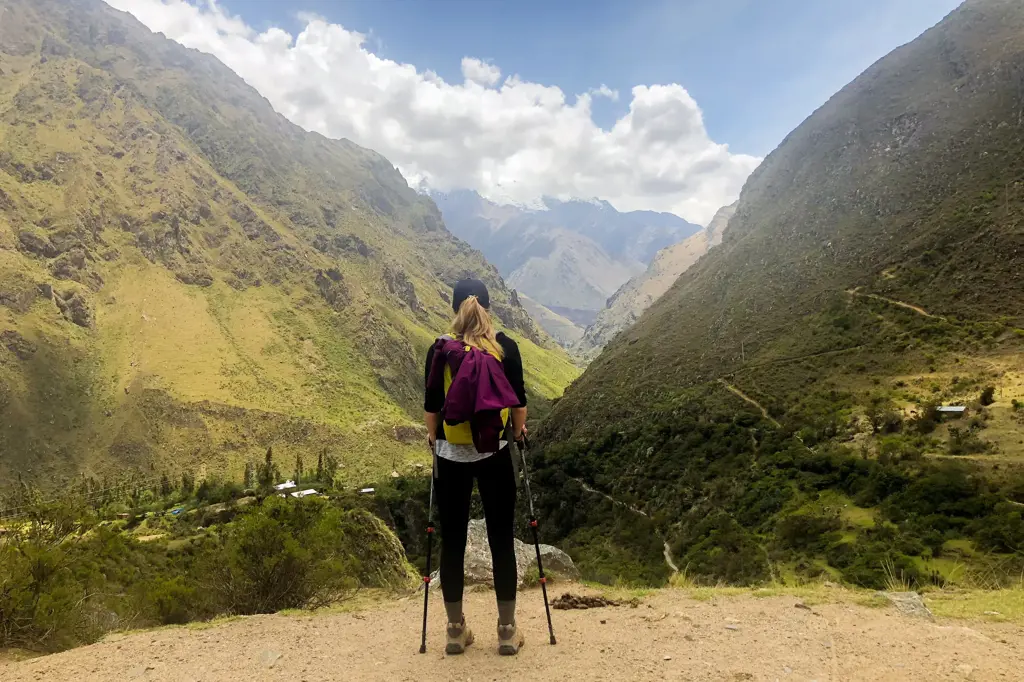
When embarking on the Inca Trail hike, it is crucial to pack enough water for the duration of your trek. Adequate hydration is essential to ensure your body functions optimally as you navigate the challenging terrain and high altitude. The Inca Trail can take anywhere from four to five days to complete, so it is important to consider your water requirements for each day.
The average person needs a minimum of two liters (or half a gallon) of water per day to maintain proper hydration levels. However, while hiking strenuously and at high altitudes, your water needs may increase significantly. It is recommended to aim for at least three liters (or three-quarters of a gallon) of water per day during the Inca Trail hike.
To calculate how much water you need to pack for the entire trek, multiply the required amount per day (three liters) by the number of days you will be hiking. For example, if you plan to complete the Inca Trail in four days, you should pack a minimum of 12 liters (or three gallons) of water.
It is important to note that carrying such a large quantity of water can be challenging. However, there are a few strategies you can employ to lighten your load:
- Utilize water purification tablets: Instead of carrying all your water from the start, you can use water purification tablets to treat water from streams or other natural sources along the trail. This method allows you to minimize the amount of water you need to carry while ensuring its safety.
- Carry a water filtration system: Another option is to invest in a portable water filtration system, such as a water filter or a water purifier. These devices allow you to filter water from streams or other water sources, removing any potential contaminants and making it safe for consumption.
- Take advantage of refill stations along the trail: There are designated campsites along the Inca Trail that provide water refill stations. These stations allow you to replenish your water supply without carrying the full amount for the entire trek. It is essential to have a water bottle or a hydration reservoir that can be easily filled.
Remember to drink water frequently throughout your hike, even if you don't feel particularly thirsty. Dehydration can occur rapidly at high altitudes, and the effects can be detrimental to your health and performance. Consider setting reminders or using a hydration pack with a built-in water bladder to ensure easy access to water while you're on the move.
By packing enough water and employing these strategies, you can ensure proper hydration and have a more enjoyable and successful Inca Trail hike. Always prioritize your health and well-being during the trek to fully experience the beauty of this ancient trail and its surroundings.
Essential Items to Pack for an Indoor Water Park Adventure
You may want to see also

Are there any specific food items or snacks that are recommended for the Inca Trail hike?
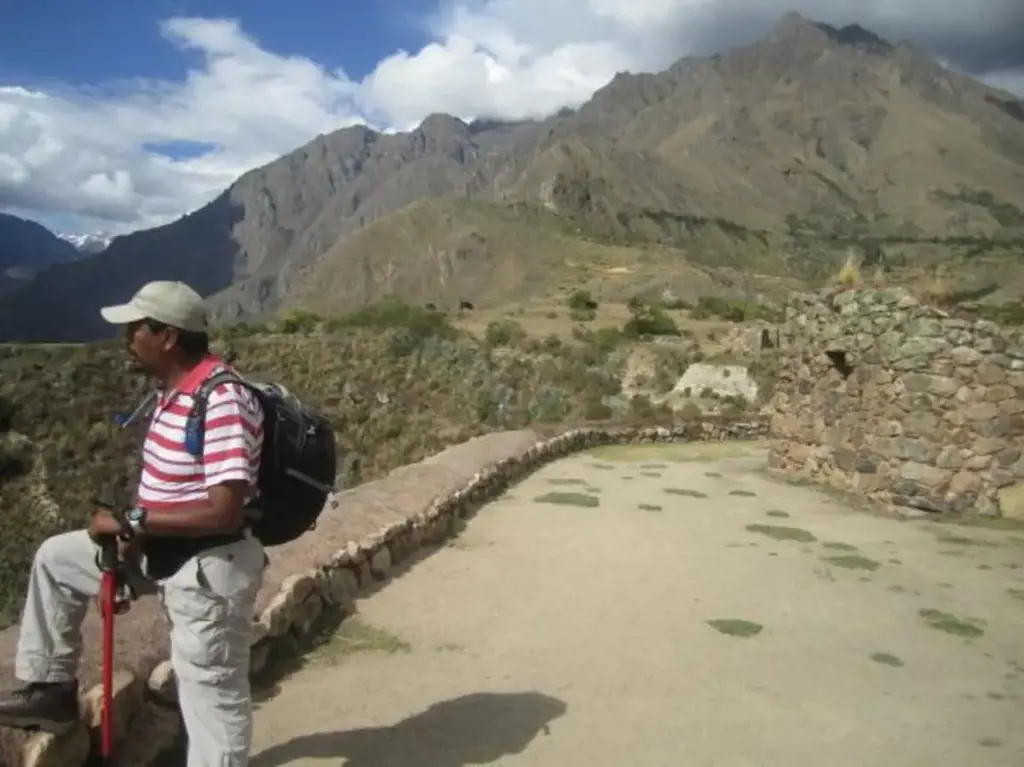
The Inca Trail hike in Peru is an incredible experience that takes you through stunning landscapes and ancient ruins on your way to the iconic Machu Picchu. The hike typically takes four days and covers a distance of approximately 26 miles. Given the physical demands of the hike, it is important to fuel your body properly to ensure you have the energy and stamina required to complete the trail. While there are no specific food items or snacks that are recommended for the Inca Trail hike, there are some general guidelines to keep in mind.
First and foremost, it is important to focus on consuming foods that provide sustained energy. Complex carbohydrates are a great choice as they take longer to digest, providing a steady release of energy throughout the day. Foods such as whole grains, oats, quinoa, and sweet potatoes are excellent sources of complex carbohydrates. These foods can be included in meals such as breakfast porridge, sandwiches, or stir-fries.
In addition to carbohydrates, it is important to consume an adequate amount of protein. Protein helps repair and build muscle tissue, making it crucial for recovery after a day of hiking. Good sources of protein include lean meats, fish, eggs, beans, and nuts. Meals such as grilled chicken or fish with roasted vegetables and quinoa, or bean and vegetable wraps, are great options for protein-rich meals.
Hydration is key when undertaking any physical activity, and the Inca Trail is no exception. It is important to drink plenty of water throughout the day to prevent dehydration. Carrying a reusable water bottle and refilling it at designated water stations along the trail is highly recommended. Additionally, electrolyte-rich drinks can help replenish minerals lost through sweating, especially on hot and strenuous days.
While it is important to focus on consuming nutritious meals, it is also valuable to have snacks on hand to keep your energy levels up during the hike. Trail mix, consisting of nuts, dried fruit, and seeds, is a convenient and energy-dense snack that is easy to carry. Granola bars, energy bars, and jerky are also popular options among hikers. These snacks provide a quick boost of energy and can be eaten on the go.
It is important to note that the Inca Trail hike is a physically demanding activity, and individual dietary needs may vary. It is recommended to consult with a healthcare professional or a registered dietitian before undertaking such a strenuous endeavor. They can provide personalized recommendations based on your specific needs and help ensure you are adequately fueling your body for the journey ahead.
In conclusion, while there are no specific food items or snacks that are recommended for the Inca Trail hike, it is important to focus on consuming a balanced diet that provides sustained energy. Incorporating complex carbohydrates and protein into meals, staying hydrated, and having snacks on hand for quick energy boosts are important strategies to support your body throughout the hike. Remember to consult with a healthcare professional or dietitian for personalized recommendations based on your specific needs.
Aer Lingus: What You Can't Pack in Your Luggage
You may want to see also

What are the guidelines for packing medication or first aid supplies for the Inca Trail hike?
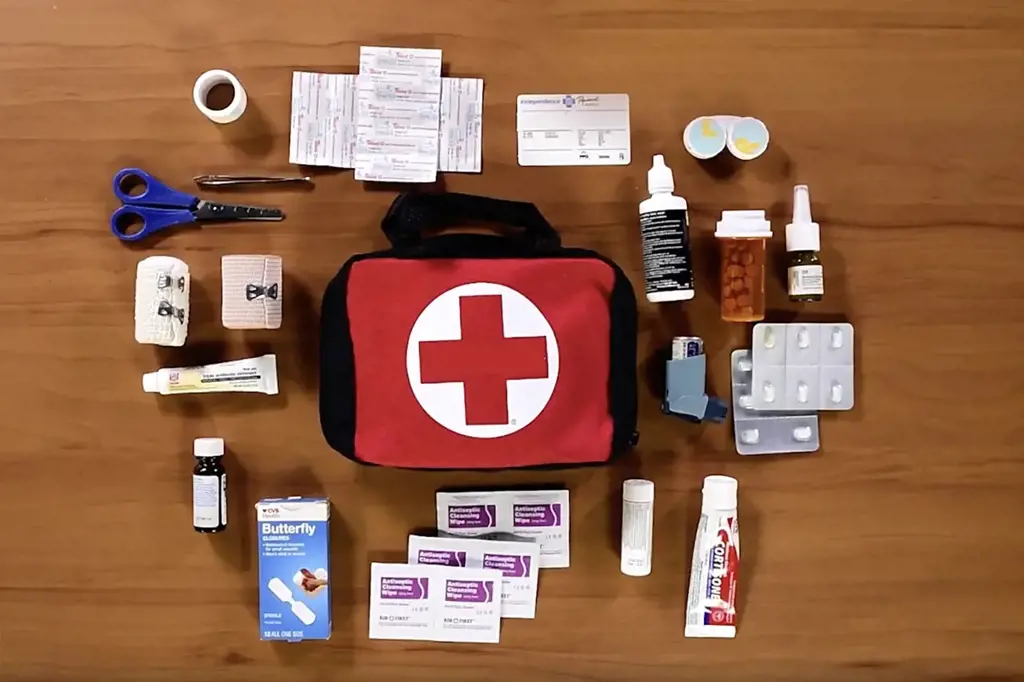
When preparing for a hike on the Inca Trail, it is important to pack medication and first aid supplies appropriately to ensure a safe and enjoyable experience. The Inca Trail is a challenging five-day trek through the Andes Mountains, and being prepared for any minor ailments or injuries is essential. Here are some guidelines to consider when packing medication and first aid supplies for the Inca Trail hike.
- Consult with a healthcare professional: Before embarking on the Inca Trail hike, it is recommended to consult with a healthcare professional, such as your doctor or travel medicine specialist. They can provide advice on specific medications or vaccinations that may be necessary for the trip, based on your individual health needs and destination.
- Pack essential medications: If you have any pre-existing medical conditions, make sure to pack an ample supply of your regular medications. These may include prescription medications for chronic conditions or daily maintenance drugs. It is also advisable to carry a copy of your prescription or a letter from your doctor, as some countries may require it for customs or security purposes.
- Pack general first aid supplies: In addition to any personal medications, it is important to have general first aid supplies on hand. This includes items such as adhesive bandages, gauze pads, antiseptic wipes, adhesive tape, tweezers, and scissors. These supplies can be used to treat minor cuts, wounds, or blisters that may occur during the hike.
- Consider altitude sickness medication: The Inca Trail reaches altitudes of over 4,200 meters (13,800 feet), and altitude sickness can be a concern for hikers. If you are prone to altitude sickness or unfamiliar with hiking at high altitudes, it is advisable to consult with a healthcare professional about medication options. Acetazolamide is commonly prescribed to prevent and treat altitude sickness symptoms, but the appropriate dosage and duration of use should be determined by a medical professional.
- Pack pain relievers and anti-inflammatories: The Inca Trail involves long days of hiking and can be physically demanding. It is a good idea to pack over-the-counter pain relievers, such as ibuprofen or acetaminophen, to help alleviate any muscle aches or pains that may arise. Anti-inflammatory medications, such as naproxen, can also be useful for reducing inflammation caused by strenuous activity.
- Include items for gastrointestinal issues: Traveler's diarrhea is a common concern when hiking in unfamiliar environments. It is advisable to pack over-the-counter medications for diarrhea, such as loperamide. Additionally, bringing electrolyte packets or oral rehydration salts can help replenish fluids and electrolytes lost due to diarrhea or vomiting.
- Pack sunscreen and insect repellent: While not directly related to medication or first aid supplies, it is important to protect yourself from the elements during the Inca Trail hike. Sunscreen with a high SPF is essential to protect your skin from the strong Andean sun. Insect repellent is also necessary to prevent bites from mosquitoes, ticks, and other insects that may carry diseases.
It is important to note that these guidelines are general recommendations and may vary depending on individual needs and preferences. It is always advisable to consult with a healthcare professional for personalized advice. By packing medication and first aid supplies appropriately, you can ensure a safe and enjoyable experience on the Inca Trail hike.
10 Essential Items for Your Camping Packing List in Wilderness Areas
You may want to see also
Frequently asked questions
When preparing for the Inca Trail hike, it is important to pack essential items that will ensure your comfort and safety during the trek. Some key items to include in your packing list are:
- A good pair of hiking boots or trail running shoes that provide ankle support and are broken in.
- Clothing suitable for layering, including lightweight and moisture-wicking t-shirts, long-sleeved shirts, a warm fleece or jacket, and a waterproof and breathable rain jacket.
- Comfortable pants or leggings for hiking, and a pair of shorts for warmer days.
- A hat, sunglasses, and sunscreen to protect yourself from the sun's rays.
- A refillable water bottle or hydration system to stay hydrated throughout the hike.
- Snacks and energy bars to keep your energy levels up during the trek.
- A daypack or backpack to carry your belongings during the hike.
- Essential toiletries such as toilet paper, biodegradable soap, and wet wipes.
- A camera or smartphone to capture the incredible views along the trail.
- Sleeping bag and a lightweight camping mat if camping overnight.
While there are no specific restrictions on what you can pack for the Inca Trail hike, it is important to keep in mind that you will be carrying your belongings throughout the trek. Therefore, it is advisable to pack light and prioritize essential items. Additionally, it is important to respect the environment and follow the principles of "Leave No Trace." This means packing out all the trash you generate and avoiding single-use items whenever possible.
Yes, it is possible to rent or buy hiking gear in Peru if you do not want to bring all the necessary items with you. Cusco, the gateway city to the Inca Trail, has outdoor gear stores and rental shops where you can find hiking boots, clothing, and other necessary gear. However, it is recommended to bring your own well-fitting hiking boots to ensure maximum comfort and reduce the risk of blisters. If you plan to rent equipment, it is advisable to do so in advance to ensure availability and proper sizing. Additionally, make sure to test any rented gear before starting the hike to ensure it fits properly and meets your needs.







